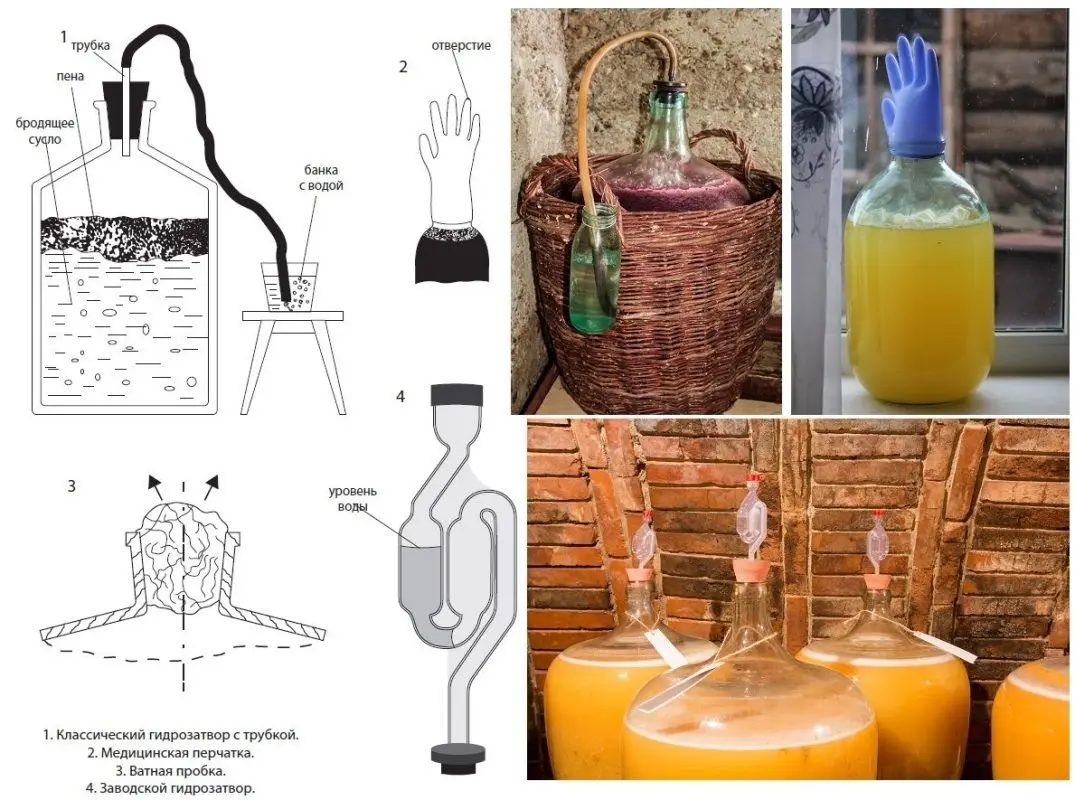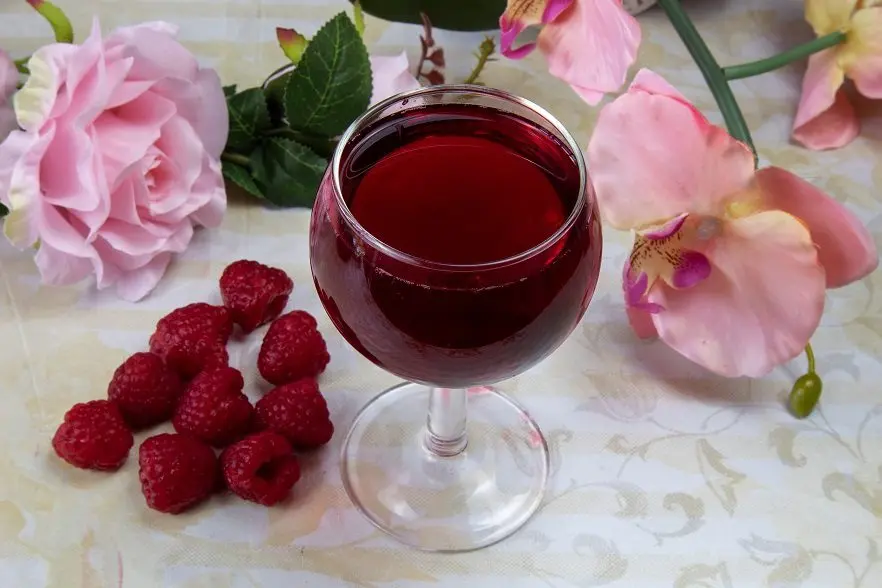Thanks to the properties of the berry and proper preparation, homemade raspberry wine turns out to be fragrant, sweet and moderately strong, slightly reminiscent of liquor. If there is an abundance of fruits, I advise you to use this proven recipe. We will consider in detail all the nuances of technology.
Any variety of raspberry is suitable for winemaking: both red and yellow. Wine from yellow berries is light, reminiscent of white grape wines. The most fragrant drink comes from wild raspberries, but it is difficult to get these berries in the right amount, so making such a drink is considered a great success.
Ingredients:
- unwashed raspberries – 1 liter;
- water – 1 liter;
- sugar – 500 grams.
Raspberries cannot be washed; wild yeast lives on the surface, thanks to which the must ferments. You just need to carefully sort out the berries, remove spoiled, moldy and rotten ones that can spoil the taste.
Making raspberry wine
1. Mash raspberries to a puree state in any way. Put the liquid in a clean, dry-wiped fermentation container, add 700 ml of water and 300 grams of sugar, mix. The total filling of the container is a maximum of 70% of the volume. There should be room for syrup, foam and carbon dioxide released during fermentation.
2. In a medical glove, make a hole in one of the fingers (pierce with a needle), and put the glove itself on a fermentation container with berries and sugar. You can also use a water seal. There is no fundamental difference between a glove and a water seal, both methods are acceptable.

3. Put the wort in a dark warm place (18-25°C) for fermentation for 10 days. Once a day, open the container and mix with a clean hand or a wooden stick.
4. Strain the wort, squeeze the berries through cheesecloth. Mix 100 grams of sugar and 300 ml of water. Pour the resulting syrup into fermented raspberry juice. Reinstall the glove (water seal) and leave to ferment. The squeezed pulp is no longer needed.
5. After 3 days, add 100 grams of sugar to the must, do not add water. Correctly add sugar in the following way: drain 50 ml of fermenting juice, dilute sugar in it, pour the finished syrup into a common container and close it again with a glove (shutter).
Raspberry wine ferments from 25 to 60 days. At this time, it does not need to be opened or stirred. If fermentation has not stopped 40 days after the last addition of sugar, you need to pour it into another container without sediment and leave to ferment. If this is not done, bitterness may appear in the finished drink.
6. After the end of fermentation (the glove is deflated, the water seal does not let bubbles, sediment has fallen at the bottom, the must has become lighter), pour the young raspberry wine through a tube, for example, from a dropper, into a container for maturation. To taste. Add more sugar for sweetness if desired. Separately, you can raise the fortress by adding vodka or alcohol in an amount of 2-15% of the volume, fixing promotes storage, but part of the aroma is lost. The wine is almost ready, the last stage is left – ripening, at which the taste will noticeably improve.
7. Fill the containers with wine (I recommend to the top so that there is no contact with oxygen), close hermetically and keep in a cool (6-16°C) dark place for 3-6 months. If sugar was added for sweetening, it is better to install a water seal or a glove for the first 7-10 days of aging to be safe in case of repeated fermentation.
As sediment appears in a layer of 2-4 cm, first every 15-20 days, then less often, filter the wine from raspberries by pouring into another container, without touching the turbidity at the bottom.
The finished drink (the precipitate no longer appears) can be bottled for permanent storage and hermetically sealed with corks.
The shelf life of homemade raspberry wine is up to 5 years. Fortress – 11-12% (without fixing with vodka).










